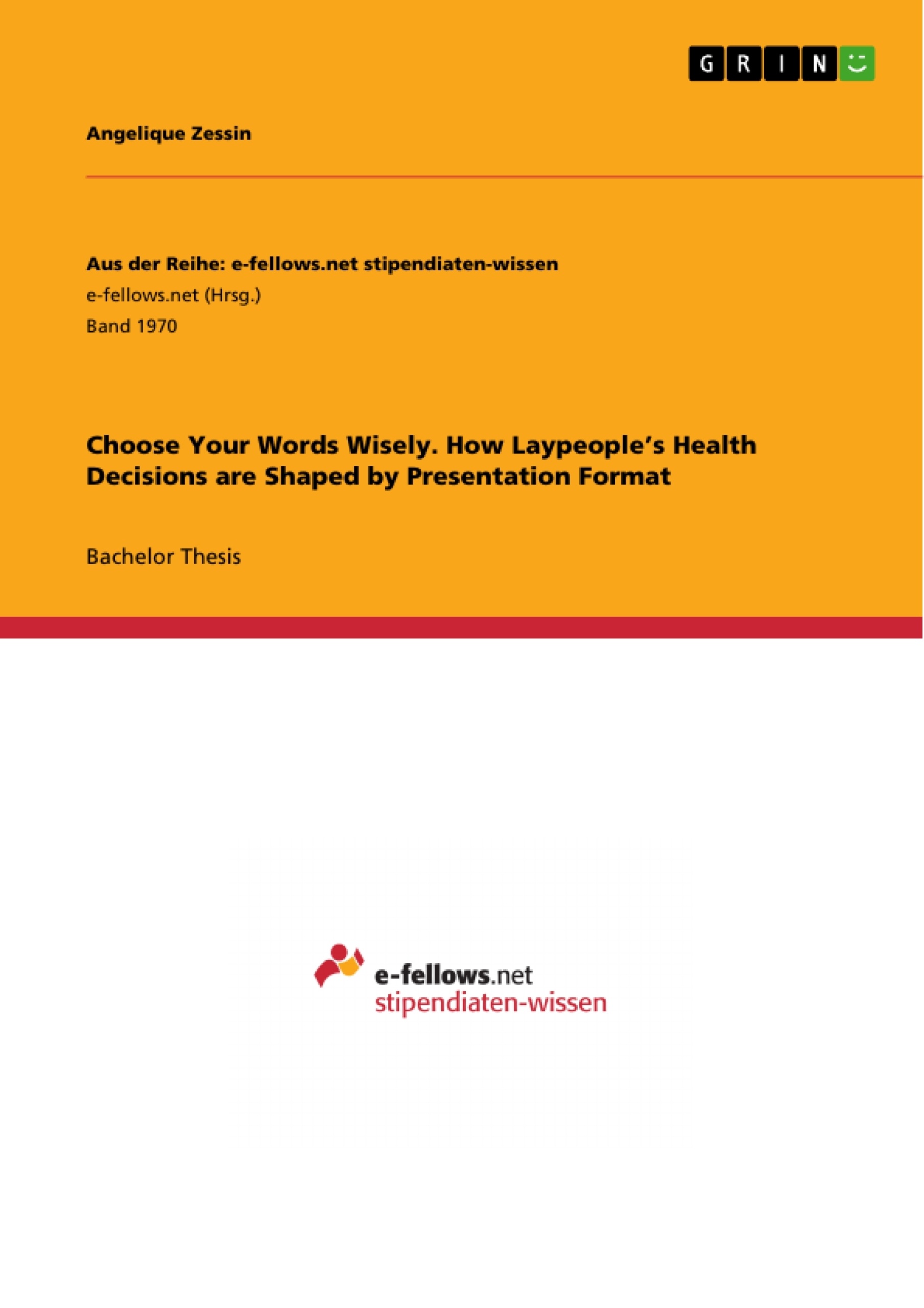How efficacy data is presented influences information processing and treatment decisions of patients and health professionals. The present study investigated the impact of risk reduction format on the understanding and recall of treatment effects, as well as on the acceptance of the treatment in question.
The effects of intelligence and prior experience were examined in an explorative way. In an online questionnaire, 172 laypersons read a hypothetical scenario of a visit to the dentist and the possibility to take paracetamol for pain relief.
Participants received efficacy information either as absolute risk reduction, relative risk reduction or number needed to treat, interpreted these figures and indicated the likelihood of them taking the medication. In the end, they were asked to recall the initially presented effect. Risk reduction in relative terms was understood least well and more persuasive than in absolute terms. Prior experience with the medication had an impact on its acceptance. Probably, the overestimation of relative risk information mediates its higher persuasiveness.
Inhaltsverzeichnis (Table of Contents)
- Abstract
- English Version
- Deutsche Version
- Table of Contents
- Empirical Background
- Introduction
- Communicating Risk
- State of Research
- Research Question
- Method
- Sample
- Experimental Design
- Test Material
- Preparation for Data Analysis
- Statistical Analysis
- Results
- The Impact of Presentation Format
- Further Analysis
- Discussion
- Summary of Main Results
- Integration of Results in Current State of Research
- Effect Size and Power
- Internal Validity
- External Validity
- Prospective future research
- References
- Appendix
- Questionnaire
- Supplementary Tables and Figures
Zielsetzung und Themenschwerpunkte (Objectives and Key Themes)
This bachelor thesis investigates the impact of different risk reduction formats on the understanding, recall, and acceptance of treatment information. The study focuses on how laypeople process and interpret information presented as absolute risk reduction, relative risk reduction, or number needed to treat. It aims to identify the most effective format for communicating treatment risks in medical settings.
- Impact of risk reduction format on understanding and recall of treatment effects
- Influence of risk reduction format on treatment acceptance
- Role of intelligence and prior experience in information processing and decision-making
- Comparative analysis of absolute and relative risk communication
- Exploring the potential of the Number Needed to Treat (NNT) as an alternative format
Zusammenfassung der Kapitel (Chapter Summaries)
The first chapter provides an introduction to the topic of risk communication in medical settings, emphasizing the importance of patient involvement in treatment decisions. It outlines the theoretical background for using different risk reduction formats and reviews relevant research on the topic. The second chapter details the methodology of the study, including the sample, experimental design, test materials, and statistical analysis. The third chapter presents the results of the study, analyzing the impact of presentation format on understanding, recall, and acceptance of treatment information. The fourth chapter discusses the findings, integrating them with the current state of research and considering implications for future research.
Schlüsselwörter (Keywords)
This study focuses on the communication of risk reduction in medical settings, exploring the impact of different presentation formats on laypeople's understanding, recall, and acceptance of treatment information. Key terms include absolute risk reduction, relative risk reduction, number needed to treat, framing effects, and patient decision-making.
- Quote paper
- Angelique Zessin (Author), 2016, Choose Your Words Wisely. How Laypeople’s Health Decisions are Shaped by Presentation Format, Munich, GRIN Verlag, https://www.grin.com/document/335526



